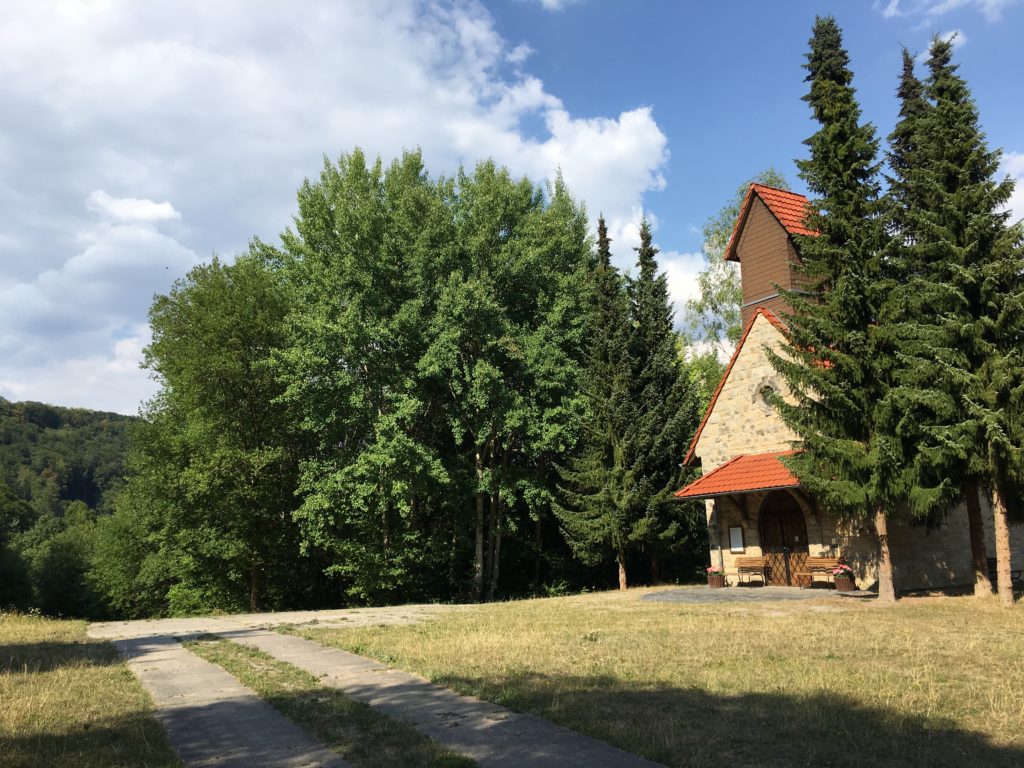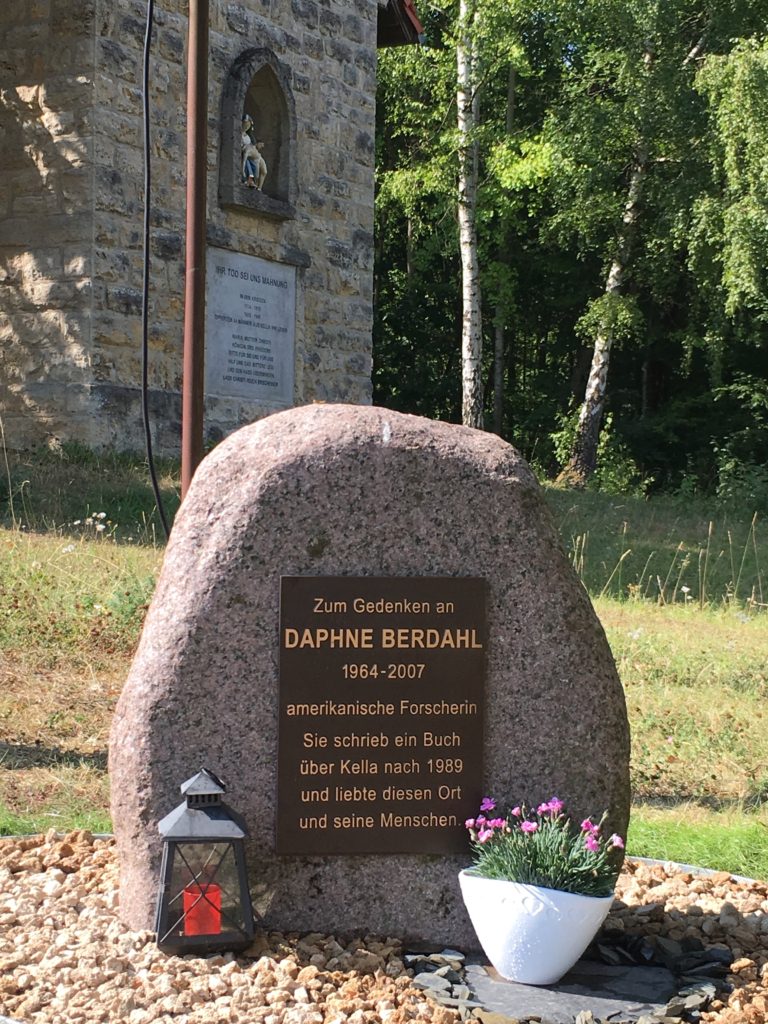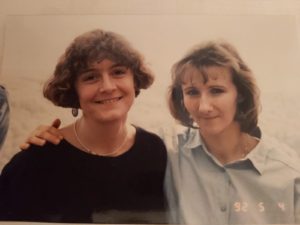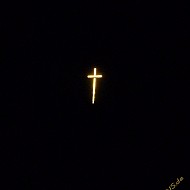… and other stories from Kella, the little village that found itself next to the Iron Curtain during the Cold War.

After Kaffeetrinken with a view of Braunrod – the former “window on the GDR” – Anna took me up the hill behind her house to the chapel I had read about in Daphne’s book. Built in 1888 as a local pilgrimage site, over the next one hundred years this little chapel witnessed some of 20thcentury Germany’s most intense moments. In 1939, the windows and altarpiece were destroyed by a Nazi mob. Villagers restored the chapel after the end of the Third Reich, but with the Grenzordnung (the East German border regime) of 1952 the chapel – and most of the village – came to sit in the 500-meter high security zone (Schutzstreifen). The GDR did not want groups of people congregating so close to the border and prohibited processions along the pilgrimage path to the chapel.
When the border regime was tightened yet again in 1961, the chapel ended up right between two border fences. The only people who could access it now were the border guards. Occasionally, they would use it as a shelter; sometimes in winter they built fires with pieces of its furnishings to keep themselves warm. For anyone else, access to the chapel was now entirely impossible, or would have posed the same deadly risks as an escape.
In the early 1980s, the state wanted to tear the chapel down – and with that plan, provoked a courageous protest on the part of the villagers: Even if they could not access it, the chapel represented a piece of their Heimat and they wanted it preserved.
It was the villagers, too, who set out to clear the pilgrimage path from border installations and restore the chapel – yet again – in November 1989, as soon as the fall of the Berlin Wall had made the border obsolete. Only three weeks later, they undertook the first procession along the stations of the cross. Daphne had observed about this:
What Hans Becker had missed during the period of socialist rule was not necessarily the freedom to travel or an array of consumer goods, although certainly these had been lacking. What had been painfully absent – precisely, perhaps, because it had been so close – was simply the freedom to walk up to the chapel on a beautiful day, pull his thoughts together, and straighten the altar cloth. (Berdahl 1999, p. 74)
On a photo in Daphne’s book, taken in 1992, the chapel is still surrounded by open space: the Grenzordnung had required open sightlines (and, in the event of an escape, shot lines). Now, twenty-five years later, it was dwarfed on three sides by towering Norway spruce, poplars, and birch. The fourth side opened up to the Kolonnenweg, the only visible reminder of the border strip I could see.

Anna led me around the chapel to a smooth granite boulder flanked by a lantern and a pot of fresh flowers. A plaque attached to the rock bore the following inscription:
In memory of DAPHNE BERDAHL
1964 – 2007
American researcher She wrote a book about Kella after 1989 and loved this village and its people.
1964: She had been born the same year as I; Anna the year before. To think of the very different threads of our three lives that had converged here in Kella, and of the circumstances that had led to that: The two Germans born on opposing sides of the Iron Curtain, who would never have met had it not been for the unexpected crumbling of this monstrously fortified border – and the appearance of a young American anthropologist in this small border village. To think of Daphne’s and my lives of migration across the Atlantic and Anna’s life of Bodenständigkeit, her rootedness to this place, despite the limited choices she had had about that for her first twenty-five years.

Although I had not known Daphne, I could sense the hole she had left in people’s lives. I knew that Anna missed her, and could barely imagine what her early death had meant for her husband and two young daughters. And yet, she had left such a legacy, both with her book and here in the hearts and minds of the people of Kella. I sensed, too, that I had Daphne to thank for the warm reception I had received here.

I was touched to find out that Anna and Andreas had packed a picnic dinner and were about to take me to their favorite spot on the Hülfensberg. The mountain, too, had been in the Schutzstreifen, so access to it was restricted during the division. On top of it was a Franciscan monastery that had long been a pilgrimage site. “Towards the end of the Cold War, there was only one monk up there to tend to the monastery,” Anna explained.
As we got closer to the mountain, Anna pointed out an enormous cross on its eastern slope. “It gets lit up at night, so it can be seen from miles away,” she said.
“That probably was not the case during the division?” I asked, thinking of the GDR’s antipathy towards all things religious.

“Actually it was,” she replied, “And the state didn’t like it at all. They told the monk to stop it, but he said it was an offering for people who had recently died, and that people died all the time. Eventually they left him alone.” I had to laugh at the monk’s creative response. Apparently his faith, and perhaps his secluded forest haven, had given him the strength to test the extent of the state’s grip.
Next time, find out about dating in the border zone – without phones or dating apps, but with checkpoints and border guards to contend with.

Stark juxtapostion to see a small chapel situated in a space designed for clear shooting. I like the part about the monk resisting authority and lighting the cross at night.